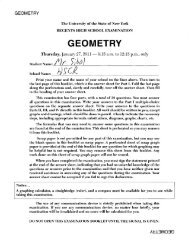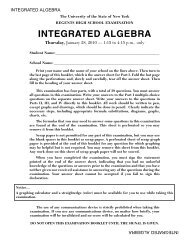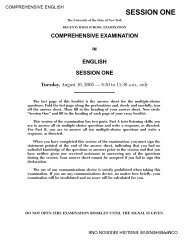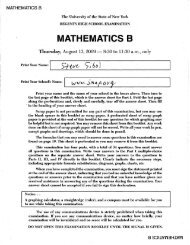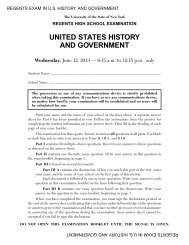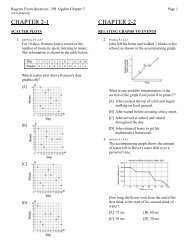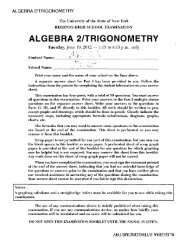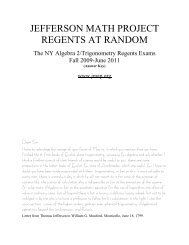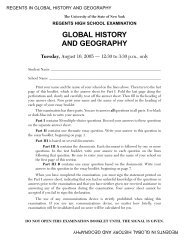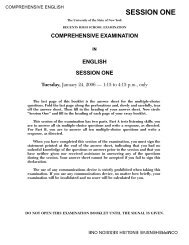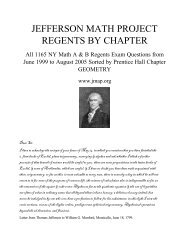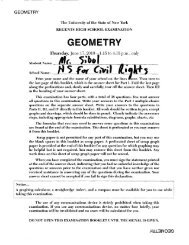SESSION ONE - JMap
SESSION ONE - JMap
SESSION ONE - JMap
You also want an ePaper? Increase the reach of your titles
YUMPU automatically turns print PDFs into web optimized ePapers that Google loves.
Anchor Paper – Part B—Level 5 – C<br />
Anchor Level 5 – C<br />
Quality<br />
Meaning<br />
Development<br />
Organization<br />
Language Use<br />
Conventions<br />
Commentary<br />
The response:<br />
Provides a thoughtful interpretation of the critical lens that clearly establishes the criteria for<br />
analysis (the true hero does not intend to be a hero at first). The response uses the criteria to<br />
make a clear and reasoned analysis of The Grapes of Wrath (Tom becomes the real hero at the<br />
end) and The Crucible (John Proctor … becomes a moral, honest man who stands up).<br />
Develops ideas clearly and consistently, with reference to relevant and specific evidence from<br />
both texts. The response uses specific details regarding setting (on the road from Oklahoma to<br />
California during the Great Depression and in Salem during the witch hunt) and<br />
characterization (he learns to be responsible and caring, stands up for a migrant worker, he<br />
will follow Jim’s path, Proctor does nothing, he learns, He risks his reputation, sacrifices his<br />
life to ensure) in discussing unintentional heroism in both works.<br />
Maintains the focus established by the critical lens on the idea that characters come accross<br />
instances where they cannot prevent themselves from helping others and therefore becoming<br />
true heros. The response exhibits a logical sequence of ideas, first presenting information to<br />
describe Tom Joad’s character change (Tom Joad begins as a selfish young man and ends up as<br />
a hero who sacrifices his life for the good of others), then John Proctor’s character change<br />
(John Proctor starts out as a liar and adulterer, but becomes a hero … to admit the truth and<br />
defend Elizabeth and other innocent people), and concluding with an assessment of heros.<br />
Transitions are appropriate (Both writers, Therefore, In the beginning).<br />
Uses language that is fluent an original, with evident awareness of audience and purpose (In<br />
this act of selflessness, which directly contrasts from his former selfishness and preoccupation,<br />
Tom Joad becomes a true hero), but is occasionally inexact (Tom defends Jim Casy as a police<br />
officer shoots him by killing the cop). The response varies structure and length of sentences to<br />
control rhythm and pacing (In essence, heros would not be real heros if they set out to<br />
intentionally do an honorable, moral act).<br />
Demonstrates partial control, exhibiting occasional errors in spelling (unitentionally, heros,<br />
accross) and punctuation (caught since and cave and when ) that do not hinder comprehension.<br />
Conclusion: Overall, the response best fits the criteria for Level 5, although it is somewhat weaker<br />
in conventions.<br />
[63]



